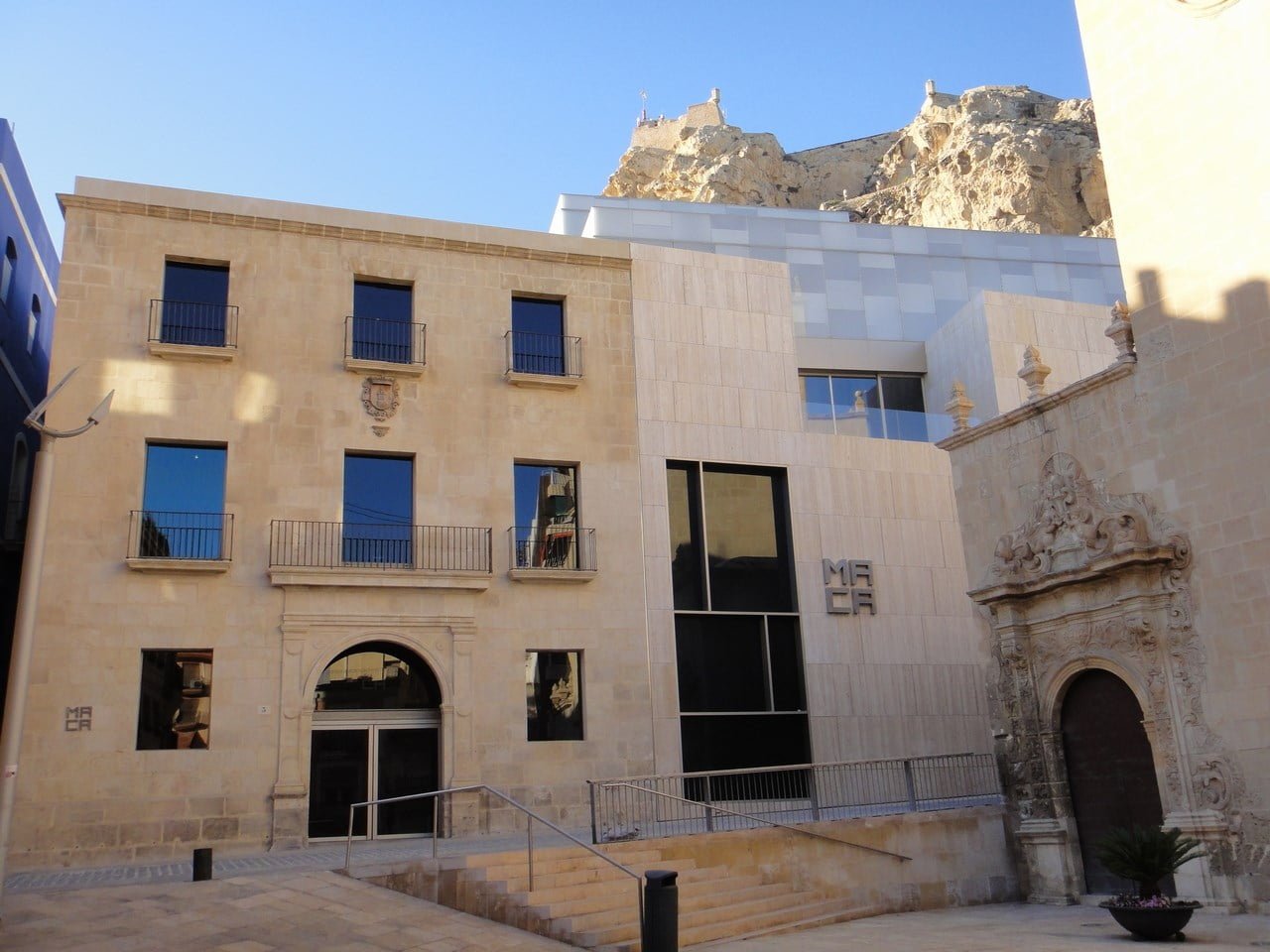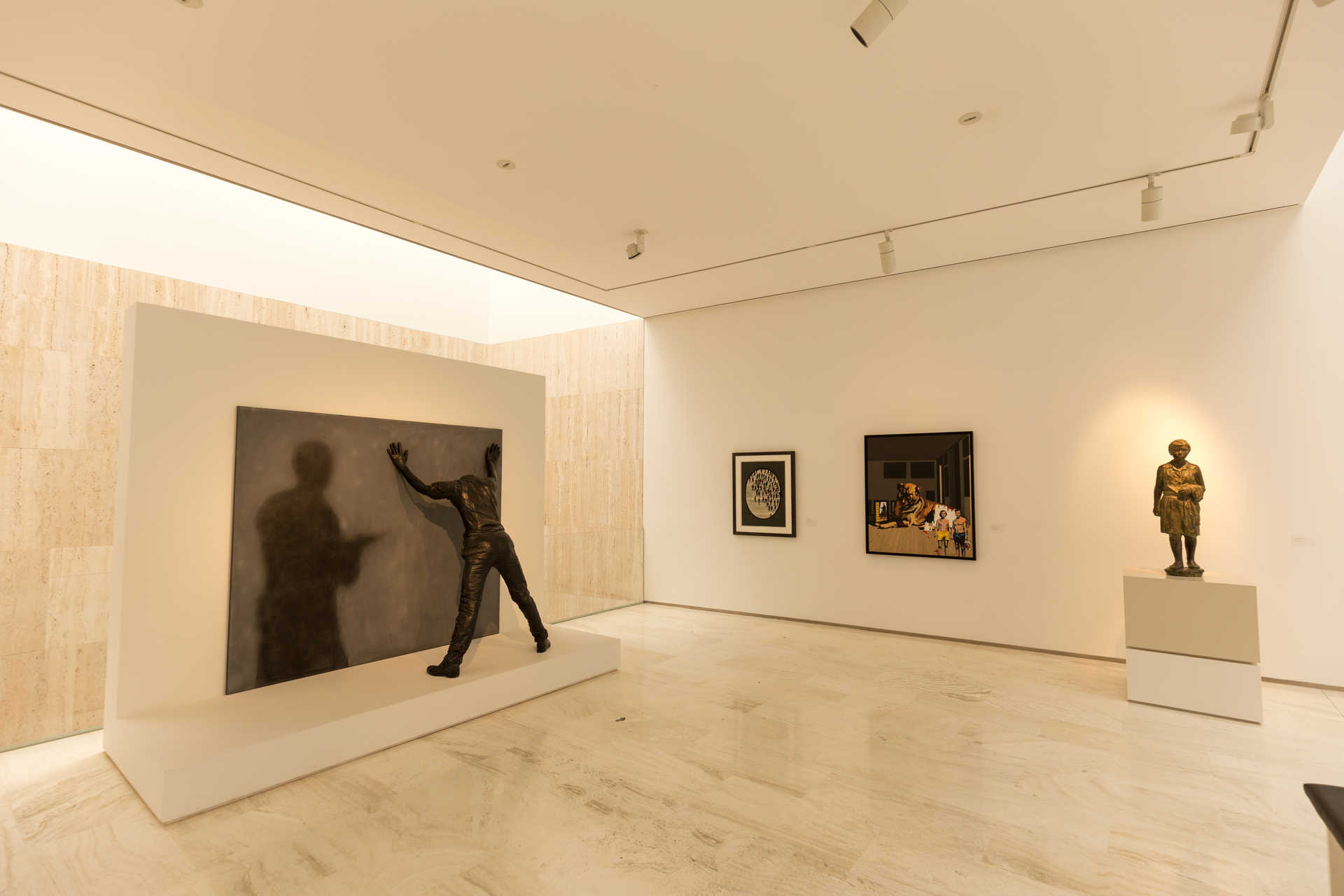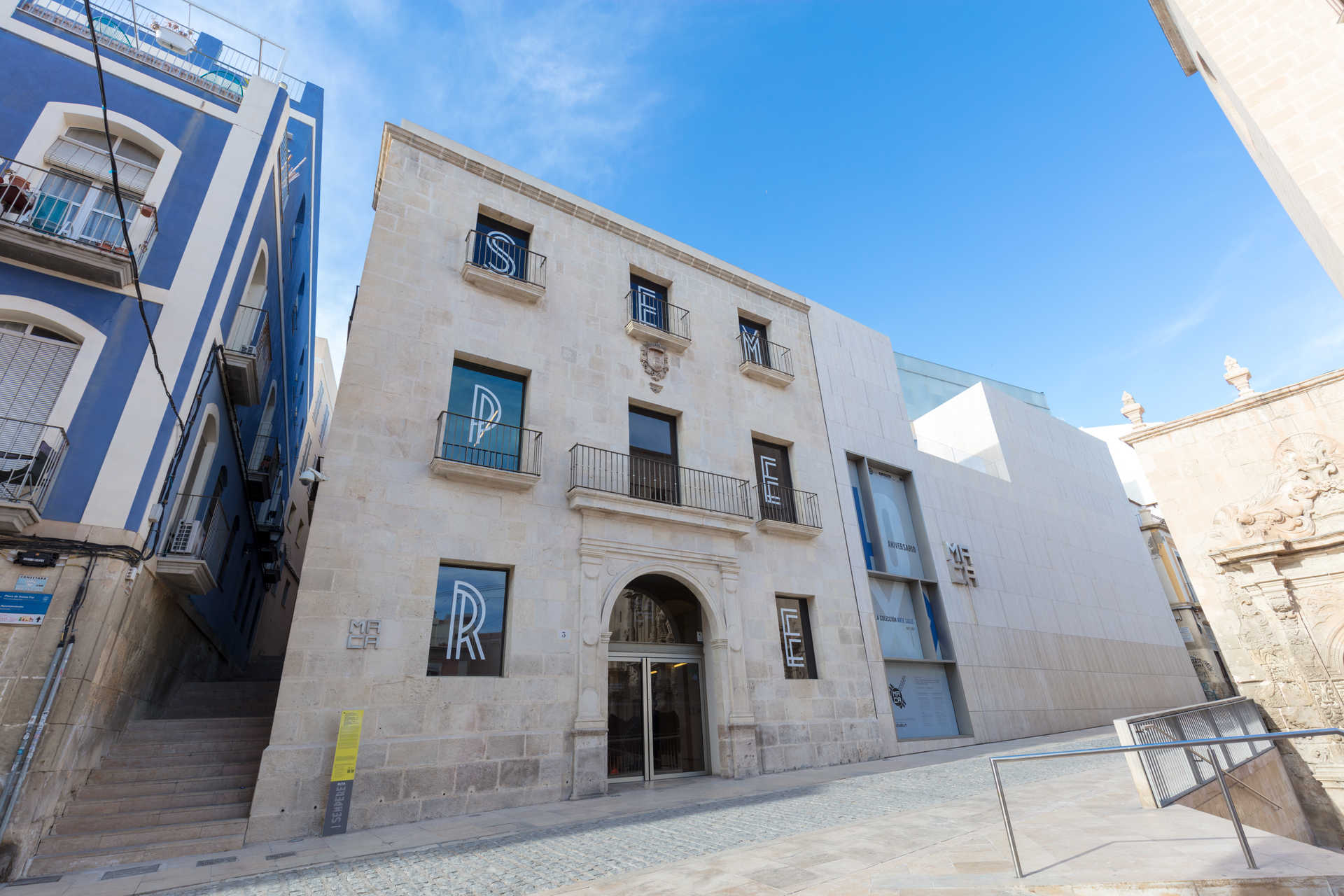MACA – Alicante Contemporary Art Museum
Poggi Bros quarries in Tivoli supplied the roman travertine that was used for interior and exterior applications at the new, renovated Alicante Contemporary Art Museum. It was an important occasion for us to collaborate with a duo of trailblazing architects, Juan Carlos Sancho and Sol Madridejos. Softened with a warm hazelnut touch, the natural light of our lapis tiburtinus became the Museum’s emblem and hallmark.
In the mid 1970s, the MACA was one of the first places in Spain completely dedicated to contemporary arts. It still plays an important role in the urban context, as a cultural and tourist hub. Works of the art movements that characterized the XXth-century are on display in its galleries. Visitors, inspired by the feeling of freedom that permeates the ambience, can explore meaningful paintings and sculptures. Avant-garde and innovative dance performances liven up the Museum.
The Museum Where Past and Present Meet
Alicante Contemporary Art Museum, as we know it today, is a building with a complex nature. Roman travertine tiles successfully harmonize it. This is the result of an intense studio and research on volume and space carried out by the firm Sancho-Madridejos. It consists of two buildings: the newly designed one, made of Tibur travertine (or roman travertine), and the historically renowned Casa de la Asegurada.

Since its opening, occurred in 1977, the Museum houses what once was the private collection of the Spanish abstract painter and sculptor Eusebio Sempere. It includes the art pieces of the XXth-century greatest international painters, like Miró, Calder, Vasarely, Chillida, González. They are now on display at MACA next to the permanent exhibition of Sempere’s works. MACA soon became a place fostering global artistic talent. A place where to go to take inspiration from the greatest crafts.
As for the Casa de la Asegurada, it should be noted that it was built in 1685. It is the most ancient building still standing in the whole city of Alicante. Even though at the beginning it was conceived as city granary, it later housed several institutions. It used to be, for instance, a city council, and a school. It was not until mid-70s that Sempere saw in it the elected place where to treasure his donation to the city.
A New Look for the Museum with Roman Travertine
In 2001, the idea of expanding the Museum was conceived and financially supported by the Valencian Community, that by then had planned a major urban renewal. The contest for the best project ended in 2010, when it was declared that the architects Sancho and Madridejos had won the bid. Their project combined the best of Alicante’s artistic tradition and the touch of innovation the city longed for. In particular, the typical look of Baroque architecture, represented by the ancient building, blends perfectly with the decidedly slenderer and modern look of the second building, characterized by an essential architectural style.

The Museum and all its galleries stretch over a surface of 5,000 sqm and extend to a height of 3 stories for the first building, and 4 for the second one. The latter hides still one surprise: the walls of the final floor are entirely made of glass. Like this, sun rays create an interplay of light and shadows with the works of art on display.
The major challenge architects had to face was the impossibility of developing horizontally the Museum plan. The structure, in fact, overlooks Santa Maria square and is already surrounded by other historical buildings, like the gothic church.
Impact of Roman Travertine on Façade and Interiors
Overall, the Museum stands out against the urban landscape. At the same time is in full chromatic harmony with adjacent buildings, completing them. The warm color of travertine matches perfectly with the white stone extracted from San Julian mountain in Alicante. The local stone was used for building both the ancient granary and the church. MACA’s complex nature is actually a tribute to natural stones and an integration of both shapes and history. Different volumes follow one another in an endless chase.
Museum’s Refined Façade
The modern building soars up towards the sky and the color contrast is highlighted precisely by the soft shades of travertine. The Tibur stone that dresses up the façade bestows on the building a polished and smooth look. For the exteriors Roman travertine tiles were obtained through vein cut slab processing. This technique offers to the public the truest nature of this natural stone, with its light, fine veining.


The choice of a natural stone like the Tibur stone created a connection between the building and the earth, suggesting an analogy between the urban development undertaken by the city and the respect for its tradition. At the same time, the glass wall on top allowed the dialogue among the building, the sky, and the wind.

Museum’s Elegant Interiors
For the interiors, the best solution was again roman travertine. Floors, staircases and colonnades are all dressed up with this precious material, a milky white with silvery streaks natural stone. Its frisky soul guides visitors through the galleries. In a space like a Museum, where artworks must be at the center of visitors’ attention, the ambience should make the guests feel comfortable and relaxed in order to establish a personal dialogue with the artists. A dialogue that in many cases travels through time and space.
The architects’ choice of covering the interiors with lapis tiburtinus has proved to be a great success with a double advantage: on the one hand, it gives a sense of balance to the building. Due to the great flow of sunlight seeping in the windows, the brightness of the room is intensified. On the other hand, the paleness in color of Tibur travertine enhances, for art lovers, the holiness of the place.

Experimenting with Roman Travertine
The Alicante Museum of Contemporary Art and its roman travertine tiles reflect the architects’ declared intent of taking inspiration from the visual effect created by folds. Their experimentation leads to the creation of new spaces. According to Sancho and Madridejos things initially seem to have a specific structure and to follow their own rules. However, in a second moment they can be transformed into something new. How? Just by highlighting those variables, taken from the context that originally went unnoticed. And so is our most valuable material: roman travertine, extracted exclusively from the historical Barco quarries in Tivoli. A natural stone unquestionably famous for its timeproof resistance and durability. Nevertheless, its details are revealed only to the ones with a careful look and a sensitive soul, ready to grasp the most delicate nuances of Mother Nature.



Follow Us On Social Media: